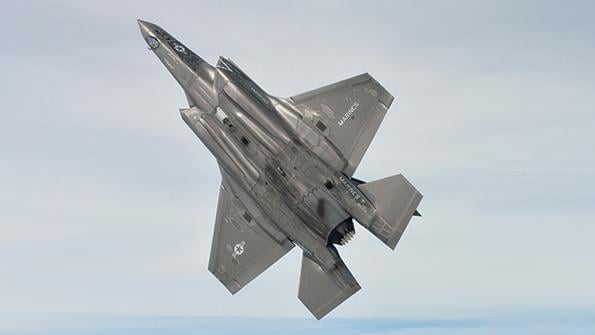
Raytheon Technologies and BAE Systems held investor and analyst meetings in May. Raytheon’s meeting was the first in-depth one it had held to discuss its outlook and highlight the benefits of cross-pollinating commercial and defense technology and research and development investment. Investment was a key theme at the BAE event as well.
The focus on investment for growth has become more pronounced. Some drivers of U.S. defense spending are moderating. The fiscal 2022 Pentagon budget request confirmed that, as did the plan through 2031 that accompanied the budget. Research, development, test and evaluation (RDT&E) spending is again prioritized—the first Biden administration budget increases RDT&E spending from the Trump administration’s last plan for fiscal 2022-26 and decreases procurement.
Another factor may be reduced international defense market prospects, as conflicts in the Middle East have cooled off.
Defense contractors typically do not offer sales guidance beyond the next year or two, but Raytheon Technologies did so at its investor conference. Its leaders projected compound annual growth rates of 3-4% from 2020 pro forma adjusted sales to 2025 sales for its missiles and defense unit, and 4-5% for its intelligence and space sector.
These are respectable growth rates, but they do not differ much from sell-side aerospace defense analyst expectations for other U.S. peers. Bloomberg collects analysts’ estimates and publishes the mean of those estimates, representing a consensus assessment. The current Bloomberg consensus for the 2020-25 compound annual growth rates for L3Harris, Lockheed Martin and Northrop Grumman are 3% each. Factoring in 2022 and 2023, for which there are more analyst estimates, Bloomberg data shows 4% annual sales growth is forecast for L3Harris and Lockheed Martin for 2022 over 2021 and 5% for Northrop Grumman. For 2023, sales are projected to increase 4% for L3Harris, 3% for Lockheed Martin and 5% for Northrop Grumman over 2022 estimated sales. BAE Systems is projected to grow sales 4% annually in 2022 and 2023, and its compound annual growth rate is projected to rise 4% from 2020 to 2025.
Bloomberg does not break out sales by business segment but shows only total sales. Other large defense primes such as Boeing, General Dynamics, Raytheon Technologies and Thales that include commercial aerospace operations have growth rates that are higher than for defense on consensus expectation of a post-pandemic recovery.
But for all the emphasis on internal investment, alignment with customer priorities and portfolios that are “well positioned” to meet future defense needs, it is noteworthy how little difference there is in consensus sales expectations across large contractors. There are several possible explanations.
First, if everyone is well positioned, no one is well positioned. Contractors habitually make this assertion, but it does not resonate to the degree that analysts believe one company has a strong superior position relative to others.
Second, the consolidation of the 1990s and 2000s has diversified portfolios. There may be exceptions, such as Lockheed Martin’s F-35 program and its contribution to total sales, but Raytheon Technologies has no single program that contributes more than 3% of sales. Just as a highly diversified portfolio of stocks will track stock market indices, a highly diversified defense products and services portfolio will track defense spending.
Third, large contractors spend similar amounts on research and development. An exception is L3Harris. Its higher R&D has not translated to higher sales growth expectations, although it likely supports higher-margin communications products. Independent R&D that is reimbursed by the Pentagon is not disclosed, but the R&D expense that is reported does not vary much as a percentage of sales. For primes, it is usually 2-3% annually.
None of the primes appears to have a differentiated business model. They have similar labor costs and management incentives. None is as vertically integrated as SpaceX, and none has struck out with a materially different attitude toward risk and prototyping. There may be nuances in specific areas of expertise, such as hypersonic weapons, electronic warfare, stealth and space, but the manner in which these are developed and delivered to customers may be similar.
Finally, it is possible that sell-side analysts are simply wrong and that one contractor will emerge with a far superior growth rate. But no company leaders appear to have successfully made that case.






Comments
On to the main point. Federal law and regulation induce considerable isomorphism amongst contractors, but not over choices of vertical integration or business portfolios. SpaceX builds spaceships, but chooses to build no other kind of ship.